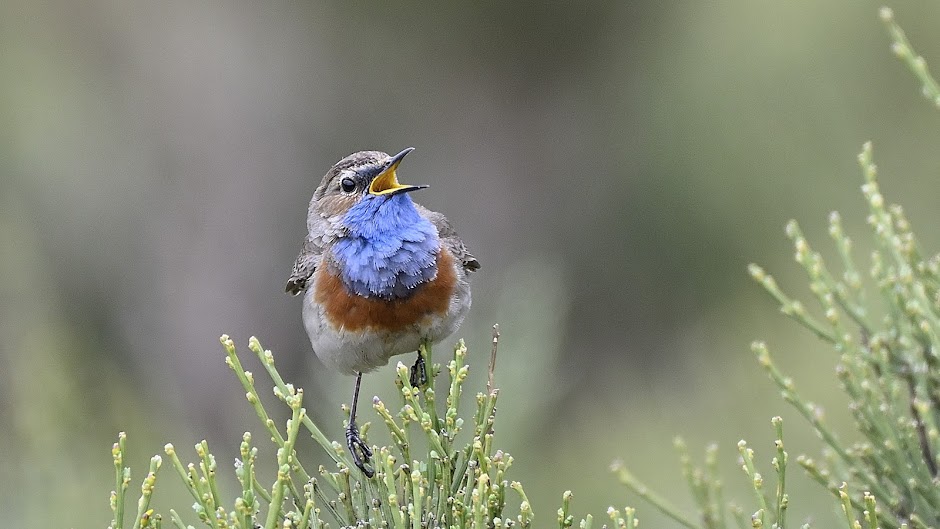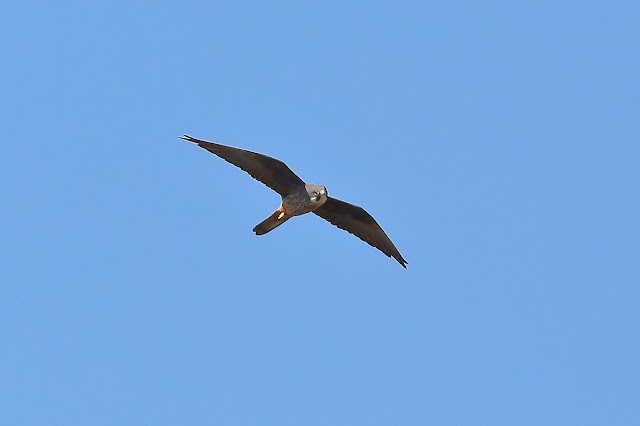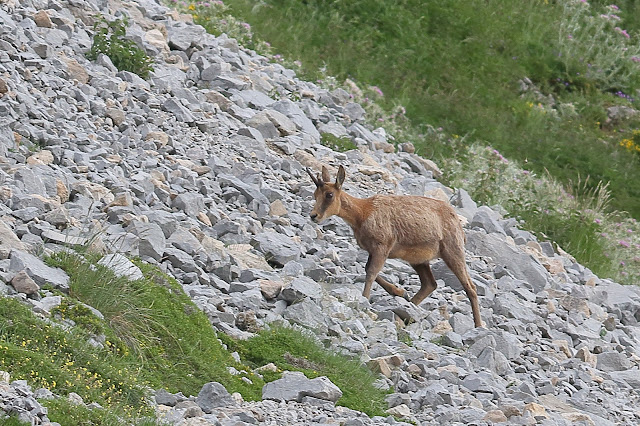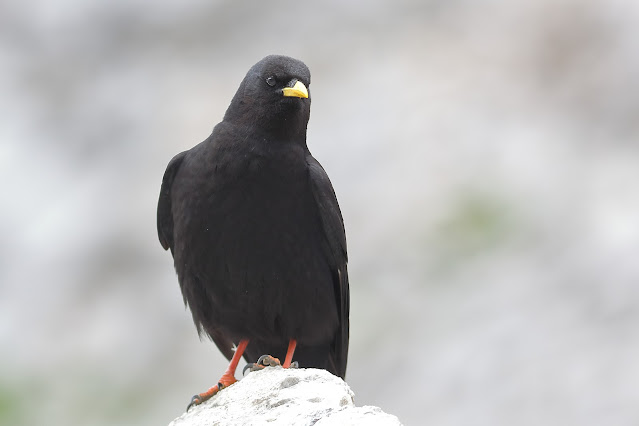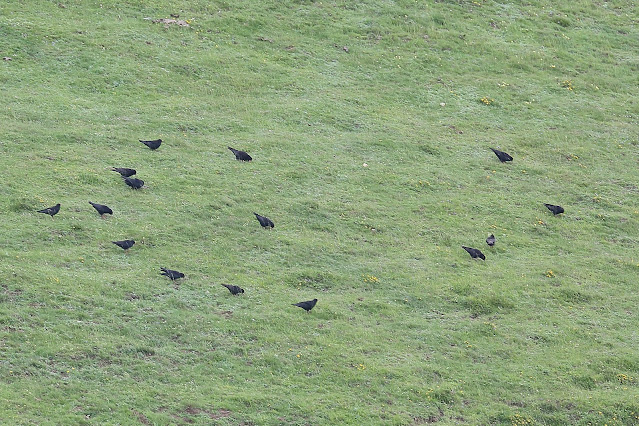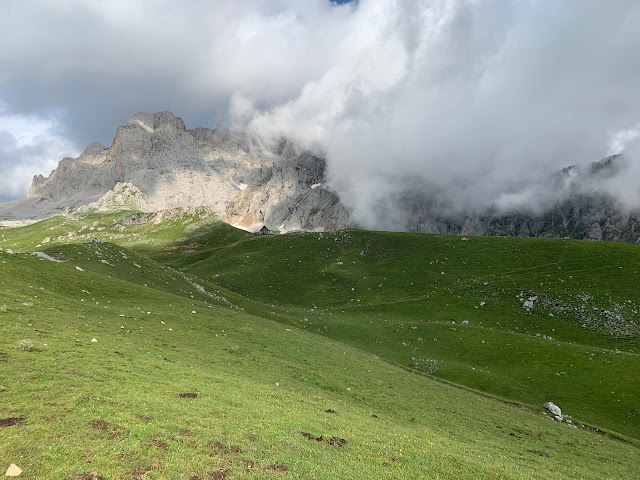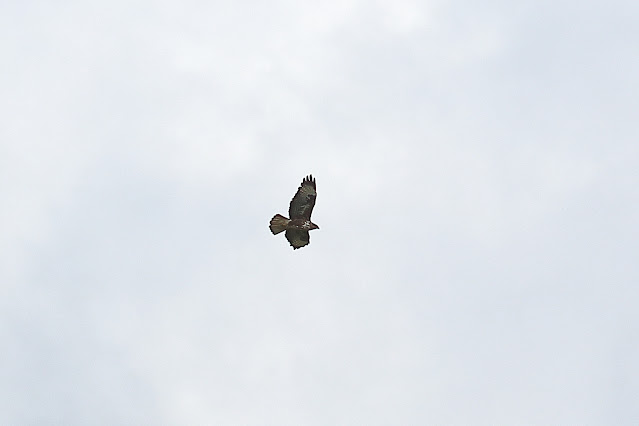Hola una vez más.
Hi again.
En el siguiente enlace podéis ver nuestros próximos viajes fotográficos y de observación de aves y mamíferos nacionales y al extranjero. Espero que os gusten y os animéis a venir conmigo. Una experiencia que nunca olvidareis.
In the following link you can see our next national and foreign Birds and Mammals photographic and observation trips. I hope you like them and I encourage you to come with me. An experience that you will not forget.
En este blog os enseño lo que pude ver y fotografiar en mi viaje programado a Soria para ver y fotografiar al halcón de Eleonora (Falco
eleonorae). El tiempo fue muy bueno aunque algo caluroso.
In this post I show you what I was able to see and photograph on my scheduled trip to Soria to spot and photograph the Eleonora's Falcon. The weather was very good although a bit hot.
Llegamos a nuestro destino sobre las 10:30 de la mañana lo primero que pudimos ver fue a este críalo europeo (Clamator
glandarius).
We arrived at our destination around 10:30 in the morning, the first thing we could see was this Great
Spotted Cuckoo.
Un rato después ya vimos los primeros halcones de Eleonora (Falco
eleonorae). En la foto un morfo claro.
A while later we already saw the first Eleonora's Falcons.. In the photo a pale morph.
Y este otro morfo oscuro.
And this other dark morph.
Luego teníamos que pasar el tiempo hasta las 5:30 de la tarde para volver a verlos en los pinares. Carrileando por la zona pudimos contemplar otras especies de aves como este bonito macho de collalba gris (Oenanthe
oenanthe).
Then we had to wait until 5:30 in the afternoon to see them again in the Pine Forests. Driving through the paths of the area we were able to spot other species of Birds like this beautiful male Northern
Wheatear.
Este bisbita arbóreo (Anthus
trivialis) no paraba de cantar y por eso lo vimos.
This Tree Pipit didn't stop singing and that's why we saw it.
También pudimos ver algunas parejas de alondra común (Alauda
arvensis).
We were also able to observe some pairs of Eurasian Skylark.
En esta zona abundan los gorriones chillones (Petronia
petronia).
Rock Sparrows are aboundant in this area.
Al medio día nos detuvimos a comer cerca de un riachuelo en donde se pueden ver varias especies de libélulas y mariposas. En la foto una libélula azul (Orthetrum brunneum).
At noon we stopped for lnch near a stream where you can see various species of Dragonflies and Butterflies. In the photo a Southern Skimmer.
Los caballitos del diablo azul (Coenagrion puella) estaban poniendo huevos en las plantas del riachuelo.
Azure Damselflies were laying eggs on the creek plants.
Esta curruca mosquitera (Sylvia
borin) andaba por la zona.
This Garden Warbler was in the area.
Vimos menos mariposas que en otros años, o al menos eso me pareció a mi. En la foto una doncella mayor (Melitaea phoebe).
We saw fewer butterflies than in other years, or at least it seemed to me. In the photo a Knapweed Fritillary.
Y por la tarde los halcones de Eleonora (Falco
eleonorae) se portaron como estaba previsto y les pudimos sacar unas buenas fotos. En la foto un subadulto morfo claro.
And in the afternoon the Eleonora's Falcons behaved as expected and we were able to take some good photos of them. In the photo a pale morph subadult.
Morfo intermedio.
Intermediate morph.
El nombre de esta ave es en honor a Eleonora d’Arborea que gobernó Cerdeña a finales del siglo XIV y comienzos del XV. Durante su reinado, promulgó diversas ordenanzas de protección de las rapaces frente a las actividades de cetreros, traficantes y mercaderes. En 1836 fue descubierta por el naturalista Gené en uno de los islotes que ella habíia tenido bajo su gobiero y en su honor la bautizón con su nombre.
The name of this bird is in honor of Eleonora d'Arborea who ruled Sardinia at the end of the 14th century and the beginning of the 15th. During her reign, she enacted various ordinances for the protection of raptors against the activities of falconers, traffickers and merchants. In 1836 it was discovered by the naturalist Gené in one of the islets that she had had under her government and in her honor it was baptized with her name.
Morfo oscuro.
Dark morph.
Morfo oscuro.
Dark morph.
Morfo claro.
Pale morph.
Es un ave estival en nuestro territorio y se reproduce en acantilados costeros de las islas baleares, islas Columbretes y en las islas Canarias en donde hacen colonias reproductoras de varias parejas.
It is a summer bird in our territory and breeds on coastal cliffs of the Balearic Islands, Columbretes Islands and the Canary Islands where they form breeding colonies of several pairs.
La invernada es en Madagascar, islas Mauricio y Reunión y en algunos lugares de la costa oriental de África. Son unos grandes viajeros llegando a recorrer más de 9.000 kilómetros.
Wintering is in Madagascar, Mauritius and Réunion islands and in some places on the eastern coast of Africa. They are great travelers, traveling more than 9,000 kilometers.
Le reproducción comienza a principios de agosto lo que la convierte en el animal que más tarde se reproduce en nuestro territorio.
Reproduction begins at the beginning of August, which makes it the animal that reproduces later in our territory.
Su alimentación varia a lo largo del año, siendo más insectívora durante el invierno y primavera y convirtiéndose en casi exclusivamente ornitófaga en la época de reproducción.
Its diet varies throughout the year, being more insectivorous during winter and spring and becoming almost exclusively ornithophagous during the breeding season.
Mientras nos íbamos moviendo de un pinar a otro, pudimos contemplar a este bonito corzo (Capreolus capreolus) en un sembrado que estaba lleno de amapolas.
While we were moving from one pine forest to another, we were able to see this beautiful roe deer (Capreolus capreolus) in a field that was full of poppies.
En los tendidos eléctricos vimos posados dos halcones de Eleonora (Falco
eleonorae) morfo oscuro.
We saw two dark morph Eleonora's Falcons (Falco eleonorae) perched on the power lines.
Y algunos más en un pinar.
And some more in a pine forest.
El motivo de que se reproduzcan tan tarde es que hacen coincidir su ciclo con la migración postnupcial de millones de pequeñas y medianas aves por las costas e islas mediterráneas y norteafricanas. También es curioso, cuando menos, que las aves que se reproducen en las Islas Canarias se vienen a las costas e incluso al centro peninsular a alimentarse en su larga migración desde Madagascar. Estos ejemplares son los que normalmente vamos a ver y fotografiar.
The reason they reproduce so late is that their cycle coincides with the postnuptial migration of millions of small and medium-sized Birds along the Mediterranean and North African coasts and islands. It is also curious that Birds that breed in the Canary Islands come to the coasts and even to the center of the peninsula to feed on their long migration from Madagascar. These specimens are the ones we normally go to see and photograph.
Si queréis suscribiros a este blog de los viajes que hacemos pincha en el siguiente enlace: Suscribirse y haz clic en ¿ Quieres suscribirte a nuestro blog?
If you want to subscribe to this post about the trips we do, click on the following link: Susbcribe and click on: Do you want to subscribe to our blog?
Espero que os haya gustado y hasta pronto.
I hope you like it and see you soon.
